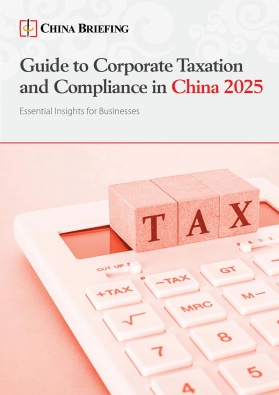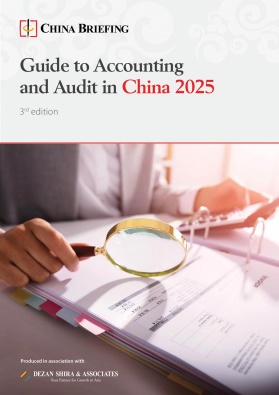China Updated Certificate of Tax Residency Rules: Key Changes Effective April 2025
China has introduced major updates to the Certificate of Tax Residency, set to take effect on April 1, 2025. The reforms enable fully digital applications through the Electronic Taxation Bureau, reduce processing time to seven working days, and offer flexibility for tax treaty benefits or verification purposes. These updates aim to enhance efficiency for individuals and businesses navigating cross-border tax compliance.
On January 26, 2025, China’s State Taxation Administration (STA) announced significant changes to the Certificate of Tax Residency, set to take effect on April 1, 2025. The updated rules broaden the certificate’s application, giving applicants the flexibility to choose whether to claim tax treaty benefits based on their specific needs.
A key improvement is the introduction of a fully online application system, allowing businesses and individuals to apply via the Electronic Taxation Bureau’s websites (电子税务局). The certificate’s content has also been updated to include the tax identification number, and the requirement for the signature of the tax authority’s officer has been removed. Processing time has been reduced from 10 to seven working days, provided the tax authority can independently verify the applicant’s tax resident status.
These updates aim to streamline the process and enhance efficiency for cross-border financial and legal activities, including banking, investment, and compliance with foreign regulations.
In this article, we examine how these updates expand the scope of the certificate, making it more versatile for both individuals and businesses engaged in cross-border financial and legal activities.
What is the China Certificate of Tax Residency, and why is it needed?
The China Certificate of Tax Residency (中国税收居民身份证明) is an essential document issued by the Chinese tax authorities that confirms an individual or entity’s tax residency status in China. It is a crucial tool for ensuring compliance with Chinese tax regulations and plays a vital role in facilitating the application of tax treaty benefits between China and other countries, as well as special administrative regions like Hong Kong, Macao, and Taiwan.
Certificate of Tax Residency is one of the documents required for applying for treaty benefits. These agreements often provide relief from double taxation, which helps to minimize the overall tax burden for individuals and businesses engaged in cross-border activities. They also allow taxpayers to access preferential tax treatments such as reduced withholding tax rates or tax exemptions on various forms of income, including dividends, interest, and royalties. These benefits are particularly important for foreign investors and individuals working in China, helping them save tax reasonably.
In addition to its role in minimizing tax liabilities, the certificate is often required in various other situations, such as when making investments, opening financial accounts, or purchasing insurance abroad.
Sample – China Certificate of Tax Residency
Recent changes to the application process for the Certificate of Tax Residency in China
Expansion of application scenarios
One of the most notable changes is the expansion of the application scenarios. Applicants can now request a Certificate of Tax Residency for two distinct purposes:
- Enjoying agreement treatment: This applies to taxpayers seeking benefits under international tax treaties, such as reduced withholding tax rates on income like dividends, interest, and royalties. To qualify, applicants must provide supporting documentation such as contracts, agreements, board resolutions, and relevant payment proofs.
- Not enjoying agreement treatment: This scenario applies when taxpayers need the certificate for other regulatory or business purposes without claiming tax treaty benefits. In such cases, applicants must submit documentation verifying the necessity of the certificate, such as formal requests from regulatory bodies or other legal justifications.
By introducing these two categories, the updated system ensures greater flexibility, allowing taxpayers to select the appropriate application purpose based on their individual tax and business needs.
Full-process online application
Another major improvement is the complete digitization of the application process. Enterprises and individuals can now apply for the Certificate of Tax Residency through the Electronic Taxation Bureau’s online platforms. This shift eliminates the need for physical visits to tax offices, significantly enhancing convenience and efficiency.
To be noted, for those who do not want to or cannot use the online channels, they can still go to the offline tax bureaus in charge to obtain the certificate.
Adjustments in the content of the Certificate
Several updates have also been made to the Certificate of Tax Residency to enhance its clarity, functionality, and ease of use. Key updates include:
- Inclusion of the tax identification number: The certificate now features the tax identification number, simplifying verification for tax authorities and financial institutions.
- Optional partnership information: Applicants can request the inclusion of partnership details, providing greater flexibility for businesses structured as partnerships.
- Removal of the signature requirement: The certificate no longer requires the signature of the responsible officer from the competent tax authority. Instead, it will be validated through official seals and other standardized verification methods.
These improvements enhance the certificate’s credibility and usability while streamlining administrative processes.
Faster processing time
Another critical improvement is the reduction in processing time. Under the previous system, applications typically took up to 10 working days to be processed. The revised guidelines shorten this timeframe to seven working days, provided the tax authority can independently verify the applicant’s tax resident status.
How to apply for the Certificate of Tax Resident online
The online application process involves a few key steps:
- Log in to the Electronic Taxation Bureau: Access the platform via the official website for enterprises or the dedicated site for individual taxpayers. (Also read: Register with the IIT app or the e-tax system)
- Complete the application form: Select the appropriate purpose for the certificate (either for claiming tax treaty benefits or for other verification purposes).
- Upload supporting documents: Submit the necessary paperwork based on the selected application type.
- Submit for review: The competent tax authority will process the request and verify the applicant’s tax residency status.
- Track and receive the certificate: Applicants can monitor their application status online and receive the certificate digitally upon approval.
By eliminating the need for in-person submissions and excessive paperwork, this digital process reduces processing times and aligns with China’s broader push toward digital governance.
When is the faster 7-day processing time applicable?
If the tax authority can determine the taxpayer’s residency status using existing records, the application will be processed within the new 7-day window.
However, if additional verification is required, the application may take longer, and the tax authority may request further supporting documents or escalate the case to higher tax authorities.
This enhancement ensures a quicker turnaround for most applicants, facilitating smoother international tax compliance and cross-border financial transactions.
Key takeaway
The recent updates to the Certificate of Tax Residency application process represent a major step forward in enhancing efficiency, transparency, and accessibility. By expanding application scenarios, enabling a fully online submission process, refining the certificate’s content, and accelerating processing times, the STA has significantly improved the taxpayer experience.
These changes provide tangible benefits to both individuals and businesses engaged in cross-border transactions, simplifying compliance with international tax regulations and facilitating access to treaty benefits. The streamlined procedures reduce administrative burdens, making it easier for applicants to secure their tax residency status and optimize tax liabilities under international agreements.
Looking ahead, these reforms align with the global trend toward digitalization in tax administration, reinforcing China’s commitment to modernization and efficiency. As tax systems worldwide embrace digital solutions, China’s transition to a more automated and user-friendly tax residency certification process strengthens its position in the international financial landscape, fostering greater convenience and compliance for global taxpayers.
Also Read:
About Us
China Briefing is one of five regional Asia Briefing publications, supported by Dezan Shira & Associates. For a complimentary subscription to China Briefing’s content products, please click here.
Dezan Shira & Associates assists foreign investors into China and has done so since 1992 through offices in Beijing, Tianjin, Dalian, Qingdao, Shanghai, Hangzhou, Ningbo, Suzhou, Guangzhou, Haikou, Zhongshan, Shenzhen, and Hong Kong. We also have offices in Vietnam, Indonesia, Singapore, United States, Germany, Italy, India, and Dubai (UAE) and partner firms assisting foreign investors in The Philippines, Malaysia, Thailand, Bangladesh, and Australia. For assistance in China, please contact the firm at china@dezshira.com or visit our website at www.dezshira.com.
- Previous Article China Manufacturing Tracker: 2024-25
- Next Article EU-China Relations After the 2024 European Elections: A Timeline










